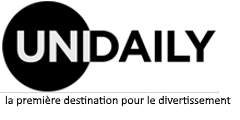Hey there, space enthusiast! Imagine a tiny traveler from another star system zooming through our cosmic neighborhood. Well, that’s exactly what’s happening right now with 3I/Atlas, the third-ever confirmed interstellar object to visit our solar system. Let’s unpack the fascinating story of this cosmic visitor and why it matters—for science, for curiosity, and maybe even for our sense of wonder.
🚀 What’s 3I/Atlas All About?
Discovered on July 2, 2025, by the ATLAS telescope in Chile, 3I/Atlas (pronounced “A-T-L-A-S”) is officially the third known object from outside our solar family to wander into our celestial backyard. Think of it as a rare guest at a party so exclusive that only two others (Oumuamua in 2017 and Borisov in 2019) have ever attended. And it’s not just any guest—it’s big, fast, and packed with mysteries waiting to be unraveled.
🧐 Speed, Size, and Safe Distance
Here’s the cool stuff:
-
Speed demon: Zooming at about 37 miles per second (59 km/s), it’s racing through the solar system like it’s on a mission.
-
Bye-bye Earth: No need to freak out—its closest approach to Earth’s orbit in October will be a chill 150 million miles away, roughly the distance between the Sun and Mars.
-
Size matters: Early observations show a visible tail and a cloud of gas and dust. Plus, it seems larger than Oumuamua and Borisov—possibly a few miles wide.
🔍 Why Scientists Are Buzzing
1. A Peek into a Distant World
Comets from other star systems aren’t just pretty sights—they’re natural time capsules. Studying their composition gives researchers clues about planetary systems far beyond ours.
2. Comparing With Past Visitors
Every interstellar visitor is unique. Oumuamua surprised scientists with its asteroid-like appearance, while Borisov was classic comet material. How does 3I/Atlas stack up? Early signs are promising—it looks more “comet-y”—but follow-up studies will tell us more.
3. Rare Data Opportunity
These interstellar passersby are super rare. But thanks to ATLAS and teams around the world, over 100 observations have already been made from different telescopes in just a few days. In-depth tracking means better data, better understanding.
Ayo, jadilah bagian dari komunitas judi bola paling berkembang di Indonesia! Sbobet resmi terbaru hadir dengan teknologi canggih dan sistem keamanan tingkat tinggi untuk menjaga transaksi Anda.
🗓 What’s Next for 3I/Atlas?
-
October 2025: Closest approach to the Sun—perfect time to study its activity, tail, and how it responds to solar heat.
-
Through September: Visible via telescopes—so amateur astronomers, heads up!
-
December: Re-emerges on the other side of the Sun—long-term monitoring begins, adding valuable observations.
🌟 The Cosmic Perspective
We’ve been waiting and watching for years, and now, three confirmed interstellar objects in eight years? That’s meaningful. These natural visitors are helping us:
-
Understand the diversity of celestial bodies across the galaxy.
-
Test and improve our detection technology (thanks ATLAS!).
-
Feed the human thirst for cosmic stories—because knowledge is badass.
🧠 What Makes This Special
-
Scientific jackpot: A living lab for chemistry, astrophysics, and planetary science.
-
Tech showcase: Highlights power of Earth-based survey telescopes and global collaboration.
-
Big-picture juice: Reminds us we’re part of a dynamic, galactic neighborhood.
✨ Final Thoughts: A Brighter Cosmic Connection
3I/Atlas isn’t simply another rock in space—it’s a message from beyond, carrying secrets of its origin star system. As it glides past our Sun and Earth, scientists will comb through data, compare its properties to Oumuamua and Borisov, and maybe rewrite what we know about interstellar travelers. For curious minds everywhere, 3I/Atlas is an invitation—to look up, to wonder, and to join a story billions of years in the making.
🌠 Stay Tuned for More!
-
Read telescope updates and photos from observatories worldwide.
-
Got a telescope? Keep an eye out this fall—history is being made, and you can witness it.
-
Share your thoughts: What part of this cosmic saga excites you the most?
Let’s keep floating on this stardust together!
